Generally the bigger an organism is the smaller its surface area compared to its volume.
Surface area to volume ratio is a really important factor in how well an organism can exchange substances with its environment. A large mammal like a human could never absorb enough oxygen to survive through its skin which is why mammals have lungs. Lungs contain millions of tiny sacs called alveoli which provide a large surface area for gas exchange. In humans the alveoli cover have a surface area of around 100m2. Comparatively the surface area of the average adult's skin is only around 2 m2!!
Examples of organisms exchanging substances with their environment
Gas exchange in the lungs
The lungs of humans ( and other mammals ) are where gas exchange occurs. Oxygen is transferred into the blood and carbon dioxide ( the waste product of respiration ) is removed. For this process to be efficient it needs a large surface area. The alveoli ( tiny sac like structures ) provide this.
How are the alveoli specially adapted for gas exchange?
- Huge surface area.
- Thin walls ( so the gases don't have far to travel )
- A moist lining so the gases can dissolve.
- A good blood supply.
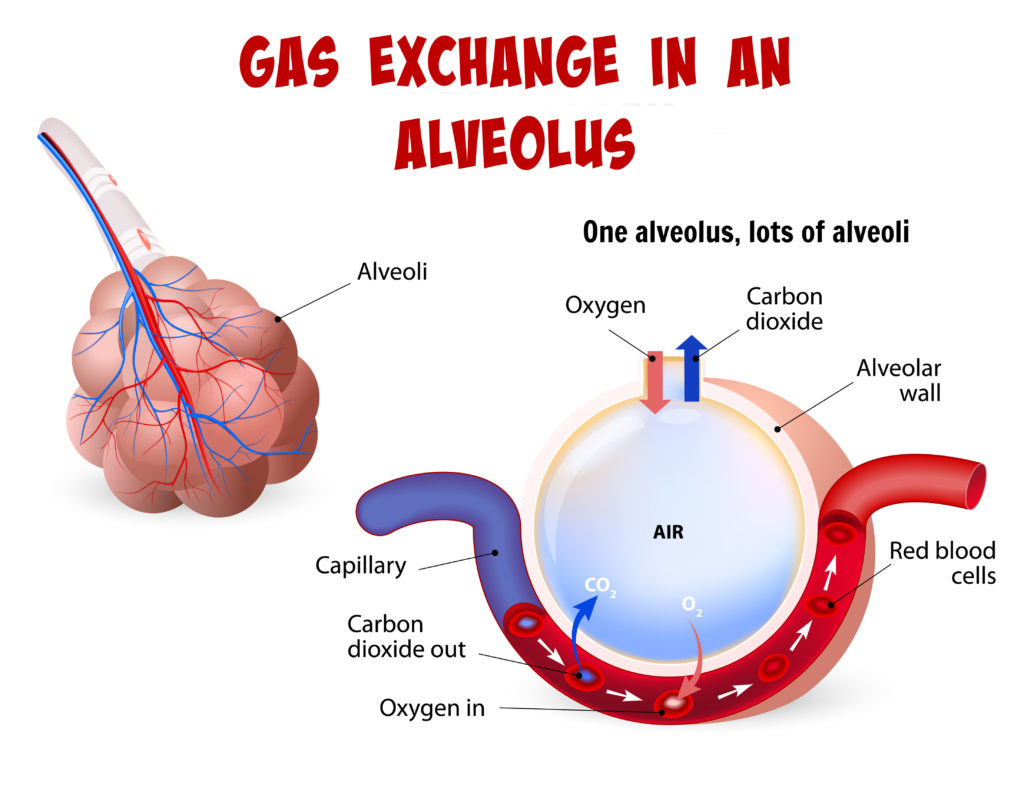
Oxygen and carbon dioxide are exchange by a process called diffusion. When blood arrives at the alveoli it is returning to the lungs after transporting oxygen to cells of the body and collecting carbon dioxide to be expelled out from the lungs. The concentration of carbon dioxide in the blood is high ( and low in the alveoli ) and the concentration of oxygen in the alveoli high ( and low in the blood ) so a concentration gradient is maintained for diffusion.
Carbon dioxide diffuses out of the blood into the alveoli.
Oxygen diffuses from the alveoli to the blood.
Villi in the digestive system
The small intestine contains lots of tiny projections called villi. Like the alveoli in the lungs these increase the surface area of the small intestine.
Food that has been broken down into small molecules is absorbed into the blood via the villi.
Plant leaves and photosynthesis
The leaves of plants have a large surface area to volume ratio which allows them to absorb a lot of light for photosynthesis.The thin leaves also allow easy diffusion of carbon dioxide and oxygen in and out of the leaf.
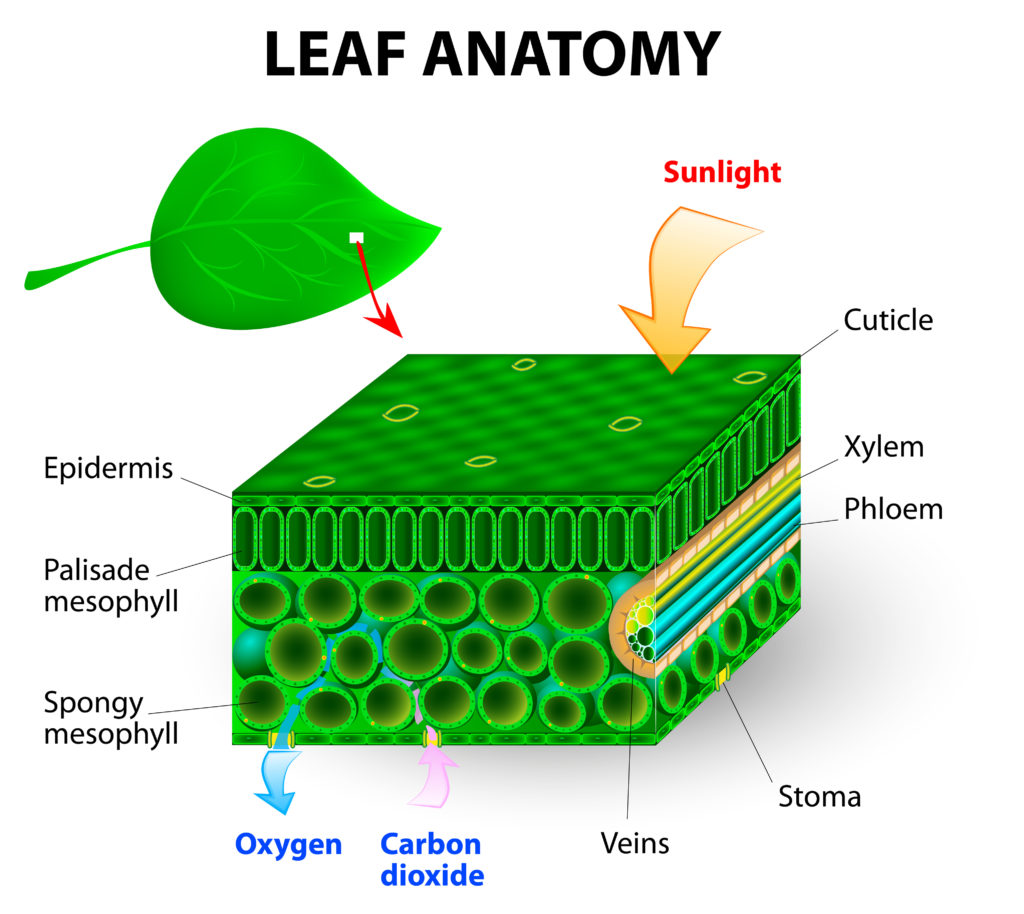
Surface area to volume ratio with sugar cubes
This simple activity demonstrates easily the difference surface area to volume ratio can make.
You'll need
Sugar cubes
3 small trays or plates
Food colouring
Small measuring container
Water
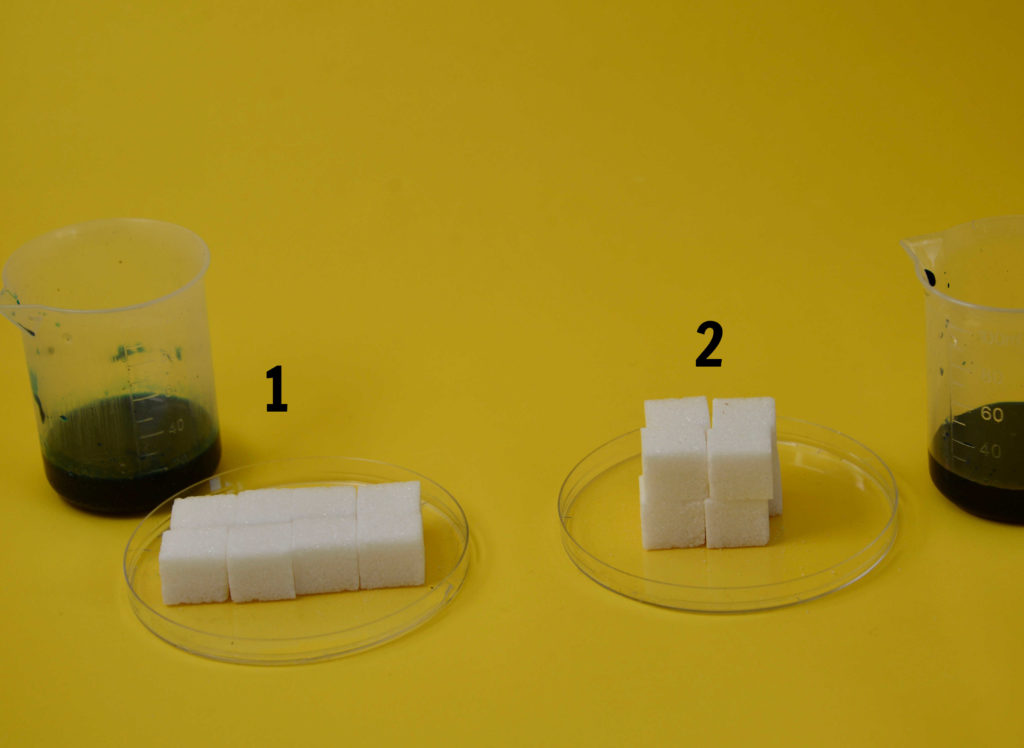
Instructions
Half fill the measuring container and add a little food colouring.
Pour a thin layer of the coloured water onto the each plate. Make sure each has the same amount of water.
Place a single sugar cube onto one plate and time how long it takes for the sugar cube to change colour completely.
Now place 8 sugar cubes ( in the arrangement the sugar cubes labelled 1 ) onto the next plate and time how long they take to become fully saturated.
This time place 8 sugar cubes ( in the arrangement of the sugar cubes labelled 2 ) onto the next plate and time how long they take to become fully saturated.
Surface area and volume ratio calculations
Volume = length x width x height
Surface area = length x width
Single cube
Each side is 1cm long
The surface area of the single cube is: (1x 1) x 6 ( 6 sides ) = 6cm2
Volume is 1 x 1 x 1 = 1 cm2
Surface area to volume ratio is 6 : 1
Sugar Cube Arrangement 1
Volume 2 x 4 x 1 = 8
Surface area
Top and bottom (4 x 2) x 2 = 16
Sides ( 2 x 1 ) x 2 = 4 and
(4 x 1 ) x 2 = 8
Total surface area 28
Surface area to volume ratio = 28:8 simplified to 3.5:1
Sugar Cube arrangement 2
Volume
2 x 2 x 2 = 8cm2
Surface area
( 2 x 2 ) x 6 = 24
Surface area to volume ratio 24 :8 simplified to 3:1

Sugar cube arrangement 1 has a larger surface area compared to its volume, so you should find that this arrangement absorbs water faster than arrangement 2!
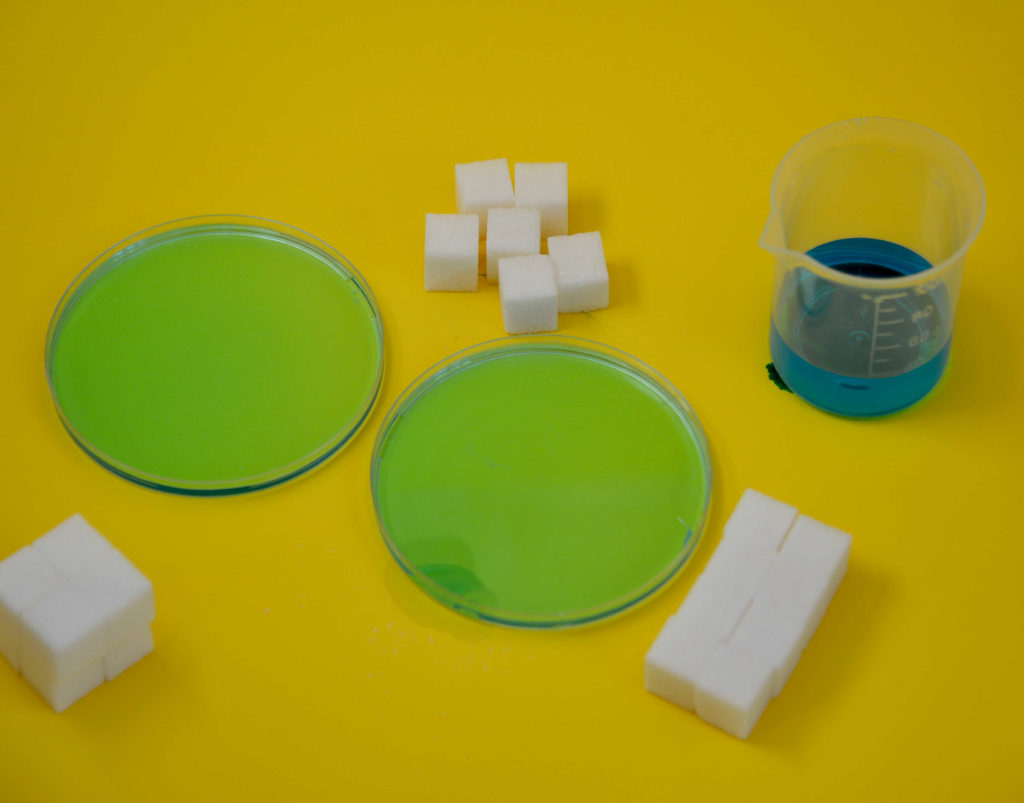
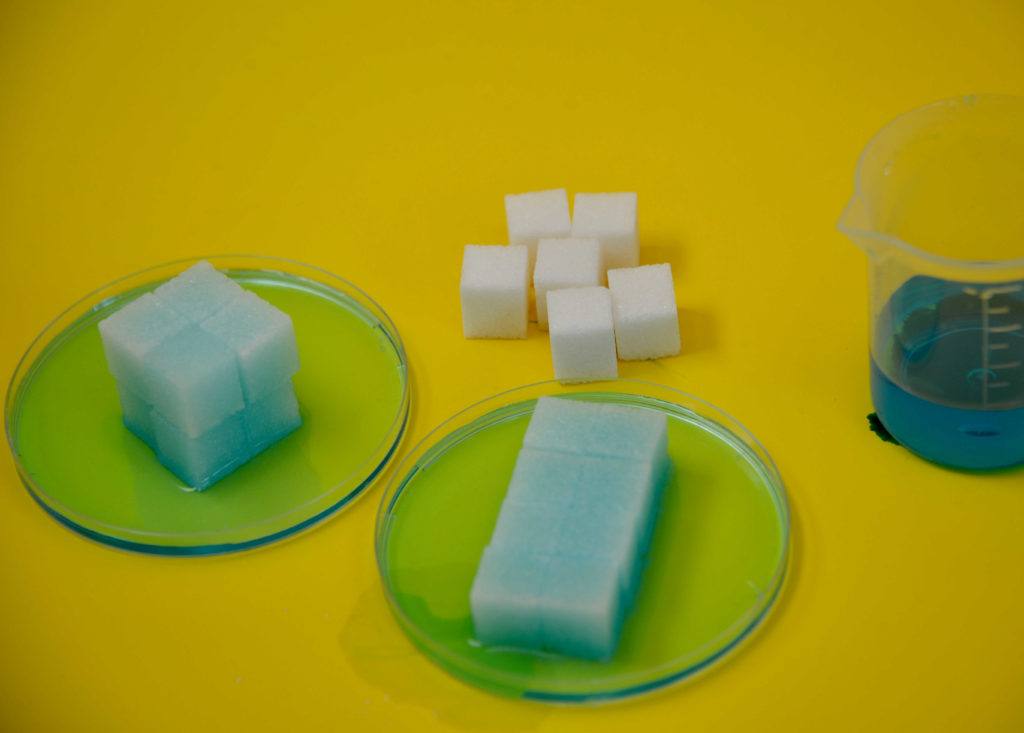
Quick Surface Area to Volume Ratio Facts
Some organisms have a specially adapted body shape to increase their surface area to volume ratio. Flatworms have a flattened body to allow substances to pass in and out easily.
Elephants have big ears to increase their surface area to volume ratio which allows them to cool down more effectively as they have a larger surface area over which to lose heat.
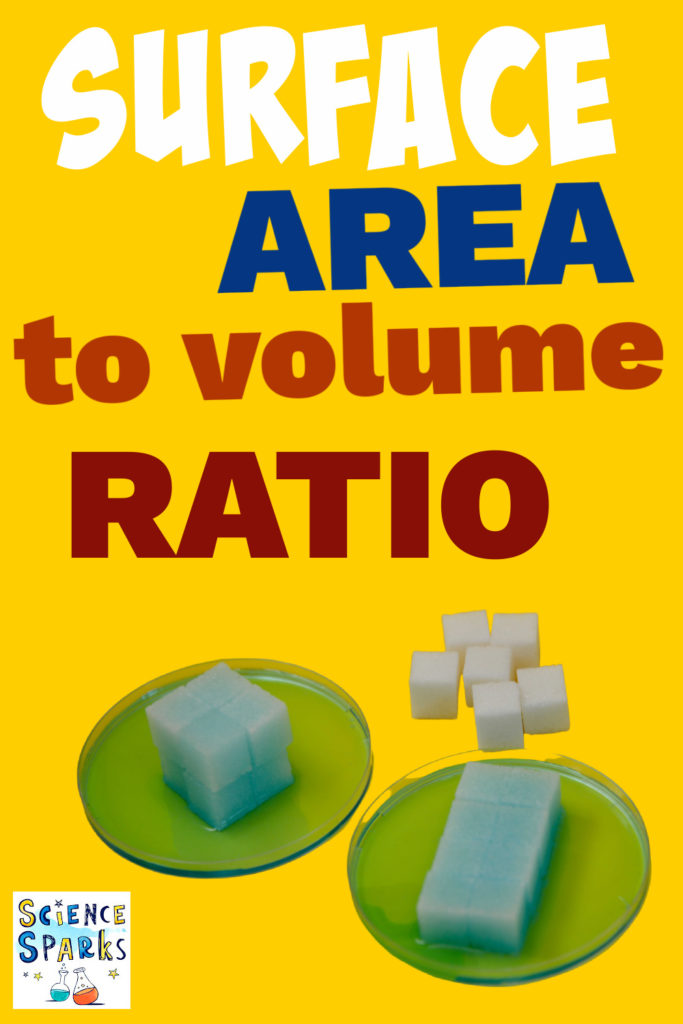
Last Updated on April 11, 2023 by Emma Vanstone



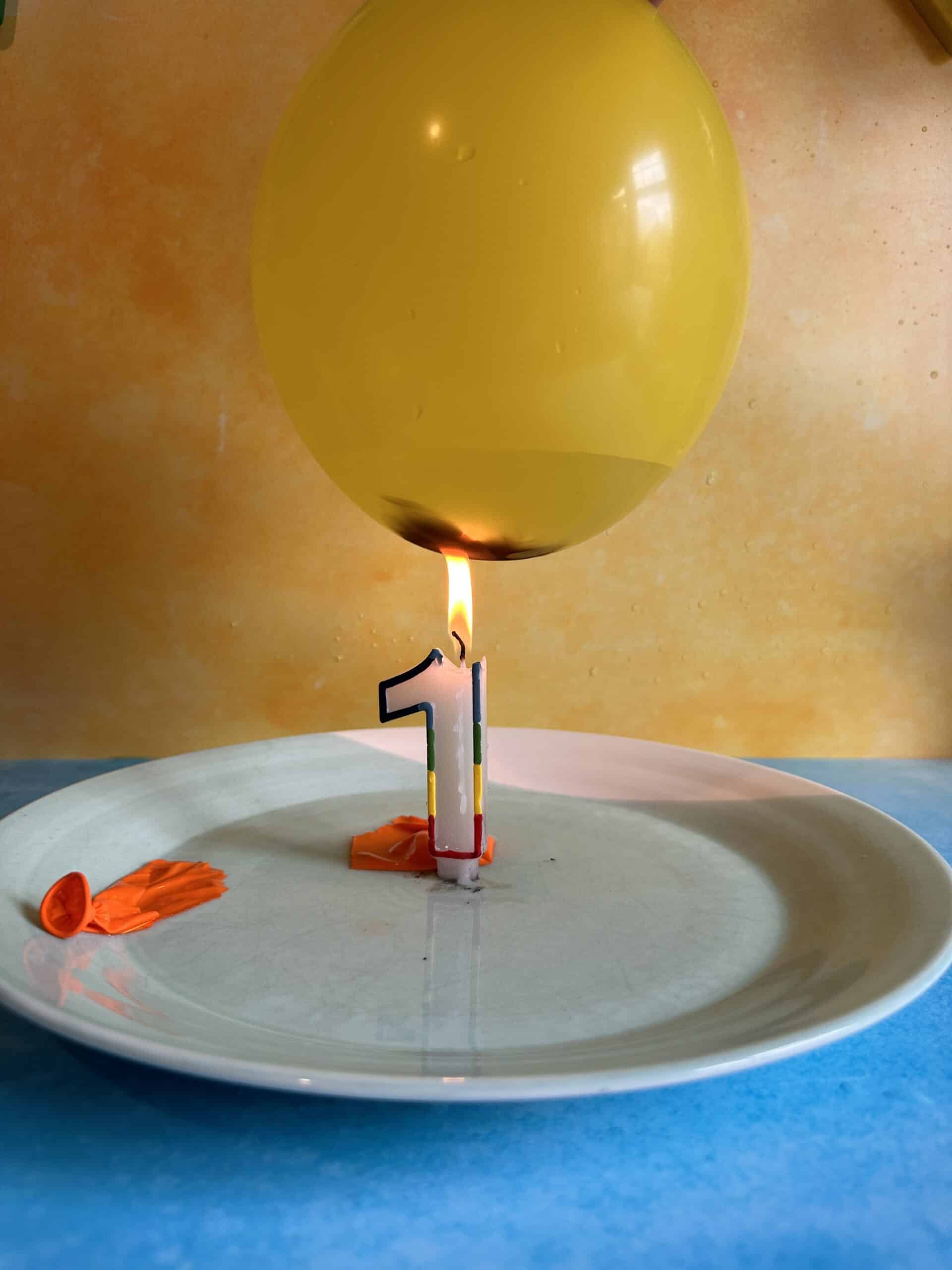
Leave a Reply